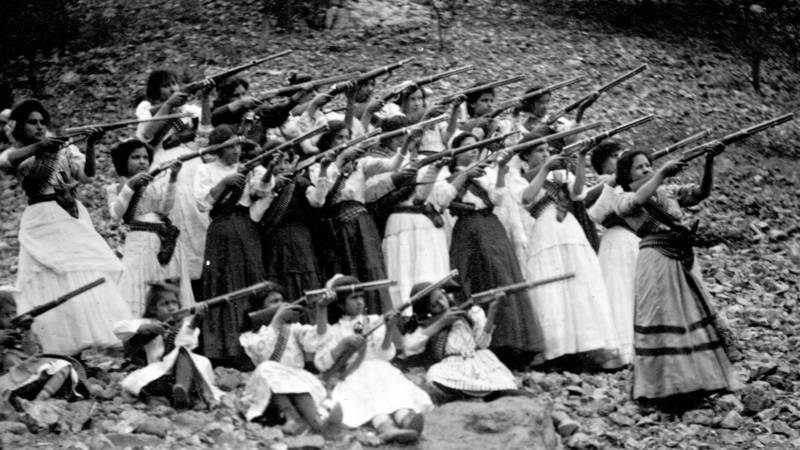Soldaderas
The representation of women in Mexican art and media has evolved over time as women played a significant role in the Mexican Revolution (1910-1920) as Soldaderas (women in the military). The Mexican Revolution was a civil war, after the Revolution ended in 1921 about one-third of the population was killed. After the devastation, the Mexican government sought to recreate the country and its identity (Barron, 2000). The roles of women in the war drastically changed their aesthetic representation in popular culture from their male counterparts. The emergence of female soldiers changed the imagery of women being masculine. And carrying attributes of strength, courage, and violence all of which contributed to the concept of male Mexican masculinity (Ruiz-Alfaro, 2012). The Mexican Revolution can be deemed as Mexico’s “renaissance” in which women were able to open new social spaces for themselves. Mexican modernism art is artists and muralists coming together to create a distinct Mexican identity and creating a new image of self-discovery. Post-revolution art helped people discover themselves in a new light and see other people for the first time. Self-discovery can also lead to a small revolution in identity between men and women as well as sexual liberation and creating icons of symbolism and personal expression.
The new modernity of women’s appearance through the lenses of Tina Modotti (1896-1942) and Flor Garduño (1957) is a great prime example of women as ordinary citizens stepping out of their traditional roles as mothers, daughters, and wives and creating a new visual culture for women and themselves.
